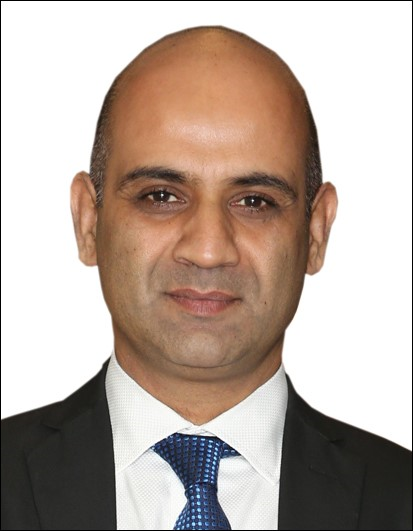The Digital Divide That Never Happened

[Blog by: Shri Nitin Chugh Deputy Managing Director and Head of Digital Banking and Transformation in State Bank of India. Views expressed are personal. ]

Shri Nitin Chugh
Stories of how the digital revolution has changed lives come to us from all over the world. However, the flavour of such stories is noticeably different in the case of India.
The stories from India are typically those of the common man making payments with ease, accessing credit through mobile apps, transforming mobility and travel, healthcare, supply chains, grocery delivery, e-commerce — an ever-growing list of how lives in India are transforming for the better. When we see an array of QR codes with street vendors and auto rickshaw drivers and people using their phones for 80-90% of their daily chores and tasks, it does seem that we are all there, doing the same set of things in much the same way, even though our phones and our homes might be different. From the vegetable vendor who accepts payments using real time UPI, to the large corporate that procures and pays its suppliers using a digital supply chain finance platform made available by its bank, all have embraced digitalisation and experienced enhanced ease of living and doing business.
Across the developed world, including in the US and Europe, the rise of digital economy came with its own set of challenges. The power of information, access to technology and innovation, all became concentrated with a few corporates or individuals. In the US, less that 1% transactions took place in real time in 2021, in contrast to over 31% in India (ACI Worldwide Real Time Payments Report). At the same time, while the technology was available for all, the consumers never owned their data. In the result, while the ease of use and experience may have been enhanced, control has come to rest with someone else.
This is not the best way to make use of technology.
Researchers and thinkers have tried to capture and reflect on this phenomenon, dwelling on the theme of a growing divide in the future spawning new classes of haves and have nots. Yuval Noah Harari, in his Homo Deus, has referred to people who will be in control of their and others’ data and take decisions and others who will be disempowered ‘digital slaves’.
Do digital technologies include or exclude? This issue is more accentuated in the developed world, where governments despite trying to address this through law and regulations have not been able to prevent data from being colonised by digital behemoths.
What about India?
India too, like many developed nations, could have become a data colony for some companies or countries. While that may have hastened digitalisation to begin with, Government of India took the road less travelled by, deciding to democratise the digital revolution. Painstakingly, India built population-scale public digital goods — an approach that takes cutting-edge technology and ensures access to it for everyone, whether they be corporates or small businesses or individuals, or the rich or the poor.
Digital public goods have been made available in the form of an ever-evolving India Stack. Addition of new layers and networks has not just propelled India into an enviable league of its own but has also given access to technology providers and users in the truest sense of ease of doing business.
Innovation is boundless with the population scale India Stack. The massive vaccination drive, which was smoothly orchestrated in record time with digital certificates for all citizens, was possible only in India because of the rails that have been laid for the benefit of all.
The ability to converge data, personal attributes and various services has ensured the gradual mainstreaming of hitherto excluded persons. In the last few years, because of digital acceptance of payments, a new ecosystem of flow-based lending has evolved, providing access to formal credit in a never-before manner. Consent-based Account Aggregator layer and the Open Network for Digital Commerce (ONDC) will further and truly democratise credit and e-commerce.
India, with its well-crafted and calibrated strategy to embrace and democratise digitalisation, has ensured that the apprehended divide never emerged. Technology is a leveller and not a divisive force, if only we know how to use it. India’s leadership in digital public goods offers unique lessons and digital public solutions that can be adapted by countries worldwide. This is especially relevant for lower and middle income countries, which face similar challenges as India, including barriers to access, connectivity and digital literacy.
The India story shows that policy interventions can be designed around the concept of greater good, even while embracing and leveraging technology whose potential for change is unknown, by including everyone.
Looking ahead
Now is the time to put all the data generated through digital interactions to good, ethical use. Now is also the time to make sure that regulations and laws make every citizen the owners of their data. The proposed data privacy law will hopefully address these issues. More importantly, the thought process around using data for artificial intelligence (AI) and in an ethical manner is also taking shape through NITI Aayog: we need responsible and inclusive AI.
Starting with the creation of digital public goods and elegant solutions of problems at population scale, we have now embarked on our journey towards superior data governance and protocols to make India a digital superpower of the future — a country where everyone grows and prospers together.





